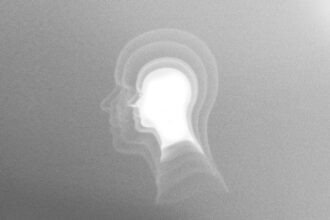You may have heard of the Wigner’s Friend thought experiment, a fascinating and perplexing scenario that delves into the heart of quantum mechanics. Proposed by physicist Eugene Wigner in 1961, this thought experiment challenges our understanding of measurement and observation in the quantum realm. At its core, it presents a situation where two observers—Wigner and his friend—are placed in different contexts regarding the same quantum event.
This setup raises profound questions about the nature of reality, the role of consciousness, and the implications of observation in quantum mechanics. As you explore this thought experiment, you will find that it serves as a lens through which to examine the measurement problem in quantum physics. The crux of the issue lies in how different observers can arrive at different conclusions about the same quantum state.
Wigner’s Friend invites you to consider whether reality is objective or subjective, and how the act of observation influences the state of a quantum system. This thought experiment has sparked extensive debate and discussion among physicists and philosophers alike, making it a cornerstone of contemporary discussions on quantum theory.
Key Takeaways
- Wigner’s Friend thought experiment challenges the role of observation in quantum mechanics.
- Wigner’s perspective highlights the measurement problem and the role of consciousness in collapsing the wave function.
- The friend’s perspective emphasizes the role of the external environment in the measurement process.
- Reconciling different perspectives in the thought experiment raises questions about the nature of reality in quantum mechanics.
- Wigner’s Friend thought experiment continues to be relevant in exploring the philosophical implications of quantum theory.
The role of observation in quantum mechanics
In quantum mechanics, observation plays a pivotal role that often defies classical intuition. You might be familiar with the idea that particles exist in a superposition of states until they are measured. This means that until you observe a particle, it can be in multiple states simultaneously.
The act of measurement collapses this superposition into a single outcome, which raises questions about what constitutes an “observation.” Is it merely the act of looking, or does it require a conscious observer? As you delve deeper into this topic, you will discover that the implications of observation extend beyond mere measurement. The concept of wave function collapse suggests that reality is not fully determined until it is observed.
This leads to intriguing philosophical questions about the nature of reality itself. If reality is contingent upon observation, what does that mean for unobserved phenomena? Are they merely potentialities waiting for an observer to bring them into existence?
These questions form the backdrop against which Wigner’s Friend operates, highlighting the complexities inherent in understanding quantum mechanics.
Wigner’s perspective on the measurement problem

From Wigner’s perspective, the measurement problem is intricately tied to the nature of consciousness and observation. He posited that while his friend could observe a quantum event and arrive at a conclusion about its state, Wigner himself would remain in a superposition regarding that same event until he made his own observation. This duality raises significant questions about the objectivity of reality and whether it can exist independently of an observer’s consciousness.
You may find it intriguing that Wigner’s view suggests a kind of hierarchy in observations. His friend, who directly interacts with the quantum system, has access to a definitive outcome, while Wigner remains in a state of uncertainty until he chooses to observe. This leads to a paradox: if two observers can have fundamentally different understandings of the same event, what does that say about the nature of reality?
Wigner’s perspective challenges you to reconsider the relationship between consciousness and the physical world, suggesting that our understanding of reality may be more subjective than previously thought.
The friend’s perspective on the measurement problem
| Friend’s Perspective | Measurement Problem |
|---|---|
| Understanding | Difficulty in defining and measuring abstract concepts |
| Subjectivity | Challenges in obtaining unbiased and accurate data |
| Reliability | Concerns about the consistency and dependability of measurements |
| Interpretation | The need for careful interpretation of measurement results |
In contrast to Wigner’s viewpoint, his friend experiences a more direct engagement with the quantum system. When you consider the friend’s perspective, you realize that they have made an observation and thus possess knowledge about the state of the system. This knowledge seems concrete and definitive from their standpoint, leading to a sense of certainty about what has transpired.
However, this certainty is not shared by Wigner, who remains in a state of ambiguity. The friend’s experience highlights an essential aspect of the measurement problem: the subjective nature of knowledge in quantum mechanics. While they may feel confident in their understanding, their reality is still contingent upon Wigner’s eventual observation.
This creates a fascinating tension between subjective experience and objective reality. You might wonder how this dichotomy can be reconciled and what it means for our understanding of knowledge itself. The friend’s perspective serves as a reminder that even within the realm of quantum mechanics, our experiences and interpretations can vary dramatically based on our position within the system.
Reconciling different perspectives in the thought experiment
As you contemplate Wigner’s Friend, you may find yourself grappling with how to reconcile these differing perspectives. One approach is to consider the idea that reality is not singular but rather exists as a tapestry woven from multiple observations and interpretations. Each observer contributes to a broader understanding of reality, even if their experiences diverge significantly.
This notion aligns with some interpretations of quantum mechanics that emphasize the role of multiple observers in shaping our understanding of events.
You might consider how interactions with the environment can lead to a collapse of superpositions without requiring conscious observation.
In this view, both Wigner and his friend are part of a larger system where their observations are influenced by external factors. This perspective allows for a more unified understanding of reality while still acknowledging the unique experiences of each observer. By examining these different approaches, you can appreciate the complexity and richness of Wigner’s Friend as it challenges conventional notions of observation and reality.
Implications for the nature of reality in quantum mechanics

The implications of Wigner’s Friend extend far beyond theoretical musings; they touch upon fundamental questions about the nature of reality itself. As you reflect on this thought experiment, you may begin to see how it challenges traditional notions of an objective universe existing independently of observers. Instead, it suggests that reality may be more fluid and contingent than previously believed.
This fluidity raises profound questions about determinism and free will within quantum mechanics.
Are your choices influencing outcomes in ways that transcend classical physics?
These inquiries invite you to reconsider your relationship with the universe and your role within it. The implications for our understanding of causality and existence are vast, prompting you to explore how these ideas resonate with your own experiences and beliefs.
Criticisms and alternative interpretations of Wigner’s Friend
Despite its intriguing nature, Wigner’s Friend has not been without its criticisms. Some physicists argue that the thought experiment relies too heavily on subjective interpretations and fails to provide concrete answers to the measurement problem. You may encounter alternative interpretations that seek to address these concerns by proposing different frameworks for understanding quantum phenomena.
One such interpretation is the many-worlds interpretation, which posits that all possible outcomes occur simultaneously in separate branches of reality. From this perspective, both Wigner and his friend exist in their own distinct realities where their observations are equally valid. This interpretation challenges you to think about how multiple realities coexist and what that means for your understanding of choice and consequence.
Another criticism revolves around the role of consciousness itself. Some argue that consciousness should not be considered a necessary component for measurement or observation in quantum mechanics. Instead, they propose that physical processes alone can account for wave function collapse without invoking subjective experience.
As you explore these criticisms and alternative interpretations, you will gain a deeper appreciation for the ongoing debates surrounding Wigner’s Friend and its implications for quantum theory.
Experimental tests and applications of Wigner’s Friend
As you delve into experimental tests related to Wigner’s Friend, you’ll find that researchers have sought ways to explore its implications through practical applications. Various experiments have been designed to test aspects of the thought experiment, aiming to shed light on the measurement problem and its consequences for our understanding of quantum mechanics. One notable approach involves creating scenarios where multiple observers interact with entangled particles, allowing researchers to investigate how different perspectives influence outcomes.
These experiments aim to determine whether observers can indeed arrive at conflicting conclusions about a single event while remaining consistent within their own frames of reference. As you consider these experimental endeavors, you’ll recognize their potential to provide insights into fundamental questions about reality and observation. Moreover, applications stemming from Wigner’s Friend extend beyond theoretical exploration; they also hold promise for advancements in quantum computing and information processing.
By understanding how different observers interact with quantum systems, researchers can develop more robust algorithms and protocols for harnessing quantum phenomena in practical applications. This intersection between theory and experimentation highlights the ongoing relevance of Wigner’s Friend in shaping our understanding of both fundamental physics and technological innovation.
Wigner’s Friend and the concept of consciousness in quantum mechanics
The relationship between Wigner’s Friend and consciousness is one of the most captivating aspects of this thought experiment. As you reflect on this connection, you’ll find yourself pondering whether consciousness plays an essential role in shaping reality or if it is merely an observer effect without deeper significance. Wigner’s assertion that consciousness influences measurement invites you to explore philosophical questions about the nature of awareness itself.
You may also consider how this interplay between consciousness and observation has implications for our understanding of free will and agency within quantum mechanics. If your conscious choices can influence outcomes at a fundamental level, what does that mean for your sense of self? This inquiry leads you down a path where science intersects with philosophy, prompting you to contemplate your place within an ever-evolving universe shaped by both conscious experience and physical laws.
Wigner’s Friend and the philosophical implications for the nature of reality
As you engage with Wigner’s Friend from a philosophical standpoint, you’ll uncover layers of meaning regarding existence and perception. The thought experiment challenges you to confront deep-seated assumptions about objectivity and subjectivity in your understanding of reality. It raises questions about whether there is an ultimate truth independent of observers or if reality is inherently tied to individual experiences.
This philosophical exploration extends into discussions about solipsism—the idea that only one’s mind is sure to exist—and how it relates to quantum mechanics. You might find yourself grappling with whether your perception shapes reality or if there exists an objective world beyond your awareness. These inquiries invite you to reflect on your beliefs about existence itself while considering how they align with or challenge contemporary scientific understandings.
the ongoing relevance of Wigner’s Friend in quantum theory
In conclusion, Wigner’s Friend remains a vital thought experiment that continues to resonate within discussions surrounding quantum theory today. As you have explored its various dimensions—from differing perspectives on measurement to implications for consciousness—you’ve encountered profound questions about reality itself. The ongoing debates surrounding this thought experiment highlight its significance as both a scientific inquiry and a philosophical exploration.
As researchers continue to investigate its implications through experimental tests and alternative interpretations, you can appreciate how Wigner’s Friend serves as a bridge between theoretical physics and philosophical contemplation. Its relevance endures as it challenges you to reconsider your understanding of observation, knowledge, and existence within an ever-complex universe shaped by both human experience and fundamental laws. In this way, Wigner’s Friend remains not just an intellectual curiosity but also a catalyst for deeper exploration into the mysteries that lie at the intersection of science and philosophy.
Wigner’s friend thought experiment is a fascinating exploration of quantum mechanics and the nature of reality, challenging our understanding of observation and measurement. A related article that delves into the implications of such thought experiments on our perception of reality can be found on the Unplugged Psych website. This article discusses the psychological and philosophical aspects of quantum mechanics, providing a broader context to Wigner’s ideas. For more insights, you can read the article by visiting




